|
TENANTS HARBOR — Normally the opening of a rustic lobster shack doesn't warrant the same kind of buzz as a shiny new Midcoast restaurant, but Luke's at Tenants Harbor, which opened for its first season this summer there, has more to it than meets the eye.
For instance, it's operated by two guys in their early 30s — and it's not just one shack. This is the 19th Luke's shack they've opened nationally. Native Mainer Luke Holden, its chief executive officer and founder, along with his business partner and president, Ben Conniff, have transformed the empty restaurant on Miller's Wharf into a cozy lobster shack with an adjoining bar. The locals, let's just say, are very happy. Since Cod End closed there, the building has been sitting empty for two years. Now, there is an easygoing place to gather, where the seafood is affordable and excellently prepared (likely caught by their friends and neighbors). The small bar serves Maine-made microbrews, such as a Lobsterman's Choice Ale made by Shipyard Brewing Co., as well as local wines and good cocktails with Maine distilled liquors, such as Bimini gin. It all started when Holden, who grew up lobstering with his father in Cape Elizabeth, decided to take a different path in his 20s and set out to be an investment banker in New York City. One hot summer day, he was feeling homesick for a good old-fashioned Maine lobster roll, but couldn't find one. Everything he saw cost at least $30, and either was slathered with too much mayonnaise and celery or else made too precious by chef's artistic interpretation. "It wasn't fresh, it wasn't authentic and because I couldn't find that there, that became a business plan to get a lobster shack off the ground," he said. Capitalizing on his investment banking background, he paired up with Conniff, a food writer, opening their first Luke's Lobster in 2009 in NYC's East Village. Their primary operation is based in Brooklyn with shacks in New York, Washington D.C., Boston, Philadelphia, Las Vegas, Maryland, Chicago and New Jersey. Over the last seven years, they've grown to include a staff of 350 on the restaurant side and another 125 in their seafood processing plant. The national press has taken notice. Luke's Lobster has been named "Best Lobster Roll" in multiple publications and food lists and has been covered by Good Morning America, Today, Eater, Forbes Magazine, NY Daily News and Wall Street Journal, to name a few. But this Tenants Harbor shack, just opened in June, is near and dear to Holden. "Anywhere in Maine I consider home," he said. "This is the most exceptional view we have from all of our shacks." "You didn't have to convince me to leave the subways of New York and come up here for a few days," added Conniff. Luke's Lobster has four core values: Taste, traceability, sustainability and community. And they've been ahead of the curve on these values since day one when it comes to preserving the Maine fisheries and supporting Maine fisherman. "We've really been proud of being able to bring this sustainable product to New York City and tell people the real story of where their lobster comes from," said Conniff. More than any of their shacks, this Tenants Harbor shack is unique in its business model. Holden sits on the board of the brand new Tenants Harbor Fisherman's Co-op with more than 15 members who supply all of their catch to his company. In return, he ensures that 50 percent of the restaurant's profits go back to that Co-op. In addition to running all of the shacks, Holden and his partners, including his brother, Bryan, opened a processing plant in Saco in 2013 called Cape Seafood to ensure none of the catch would be wasted, thus employing lobstermen well beyond the tourist season. "Staying local is important. It is the heart of what we're doing here," said Holden. No matter how well a food business is run, its success always comes down to the ingredients and how they are prepared. You won't find a lobster roll smothered in mayonnaise here. Holden and Conniff make it the way Mainers have been preparing lobster rolls for generations: on a New England split-top bun grilled with a light swipe of mayo, a drizzle of lemon butter, and a dash of Luke's secret seasoning, so that the freshness can come through on its own. "People are always told to ask where your food comes from," said Conniff. “The way we see it is you shouldn't have to ask; it should be right up front." To that end, they have a sign outside the main seating area near the ordering window that displays where everything they make is from, from lobster rolls to blueberries, even the butter and herbs comes from a Maine farm or fisherman. While Holden and Conniff have to go back to their respective offices in Saco and Brooklyn the rest of the summer, they've left the locals with a lobster shack to be proud of. Luke's at Tenants Harbor is open Memorial Day to Labor Day. They have a happy hour from 3-5 p.m. To learn more visit their Facebook page. Kay Stephens can be reached at news@penbaypilot.com
0 Comments
TENANTS HARBOR—When Scotland beachcomber Martin Gray went walking along one of his favorite beaches, Billiacru last week, about two miles from Stromness, the little fishing port where he grew up, he spied an orange plastic tag with the name C. Morris and the number #167 on it. An avid beachcomber since he was a teenager, he knew immediately what it was.
“We find lobstering gear from all along the eastern seaboard of North America, from Labrador to Rhode Island,” he said. “Maine gear is probably the largest single cohort (followed by Newfoundland/Labrador and Massachusetts) and includes escape vents, trap tags, TopMe tags, buoys, Plante sticks and pot heads.” The little piece of plastic, was in fact, a dislodged trap tag owned by Corey Morris, 35, a lobsterman from Tenants Harbor. It had traveled roughly 3,000 miles through the Gulf Stream/North Atlantic Drift that spins gear out across the Atlantic to Europe. Excited to locate the owner of his find, Gray posted a photo of the tag on his Facebook page Orkney Beachcombing. “In many ways, Facebook is an almighty pain in the backside full of bland truisms, peoples’ dinners and soppy kittens,” Gray said. “But, for finding connections, it is unsurpassed. I posted a photo on my Facebook page of a Massachusetts float found here yesterday. I had the owners name in seven minutes. I find that absolutely staggering!” As for Morris, he was just working in his garage, repainting all of his buoys and getting his gear readied for the season when his Facebook notifications went crazy. Maine followers of Gray’s Facebook page notified Morris that Gray wanted to get in touch with him so he did. What makes this find special is that this tag “C. Morris #167” was also his grandfather’s initials and original license number. Charles "Charlie" Morris was the 167th person in the state of Maine to be issued a lobster license. The year before Charlie passed away, he transferred his license number to his then-six-year-old grandson, Corey. If he hadn't done that, the license would have been considered a lost or retired license. ”I was already in an outboard with my dad at that age,” said Morris. “I couldn't even haul the trap then I was so little. I can remember going home in the evenings and hauling 10 traps with my dad. He's now held his lobster license for 29 years. Current regulations don't allow lobster fishermen to transfer tags to family members any more, so #167 will retire with Morris. "If I wanted to give my daughter mine, I couldn't,” he explained. “She'd have to go into the lottery and get a five or six digit number." "I noticed in Martin's picture that the holes of the tag are intact, so it didn't look like the hog ring ripped off," said Morris. He declined to say how it could have come off but every lobsterman who has had his gear molested, and tags ripped out to keep the trap (which runs around $100 per trap) knows it's a distinct possibility that the tag was deliberately cut out and discarded into the ocean. Asked about his grandfather would have handled that, Morris said, "They didn't have tags when he was fishing. Back in the ‘40s and ‘50s, they would've shot somebody if someone stole a trap. They took care of it themselves. They didn't need Marine Patrol and you wouldn't have the wording on the tag about imprisonment (for molesting gear.)" Things have really changed since his grandfather’s day, he said. "Everything was built from scratch, wooden round traps, knit heads. They were happy to catch a crate a day and today, we have to catch several hundred pounds a day just to earn our living, but you know the money was different back in those days too.”Gray has seen more trash float in on his beaches from the U.S. than he cares to, but when it comes to fishing gear, that’s different. “The finds from Maine fishermen are special because I know that what reaches us from there isn't really litter,” he said. “Almost all of it was lost against the wishes of the fisherman, with very little casually thrown away. The escape vents float free but that is a conservation measure to render lost ghost pots nonlethal to marine life. A brilliant plan! We have nothing like it here. There's no such thing as ‘good litter,’ but escape vents come very close! I make clear distinctions between plastic in the sea that has been willfully dumped, lost by neglect or mismanagement and lost by accident. Maine pot gear is almost all lost by accident.” Gray has been working the last five years to display the best of his beach finds into finds over the last few years into a museum. “Finding Corey’s tag has been the highlight of my beachcombing winter,” Gray said. “It has a very special tale behind it and I can see it being a star exhibit one day.” -Story and photos by Kay Stephens Related story: Maine’s treasures (and trash) wash up on Ireland’s shores I just stumbled across a great new blog about the lobstering life by author Christina Lemieux, the daughter and granddaughter of Maine lobstermen, a sternman in her youth, and now and now an advertising exec in London. Her blog Maine-ly Lobster has a great wealth of knowledge about the lobstering culture and this one post, "Frequently Asked Questions About Maine Lobster Fishing" is both hilarious and spot on.
For example (tourists we're talking to you, listen up) she writes: Five Questions You Should Never Ask a Lobster Fisherman Fishermen are notoriously secretive about the elements of their success. To divulge exactly where they’re fishing and what they’re catching is to reveal their hand and threaten their livelihood. If you wander down onto a dock and engage a fisherman in conversation, there are five questions you should never ask. They are as follows:
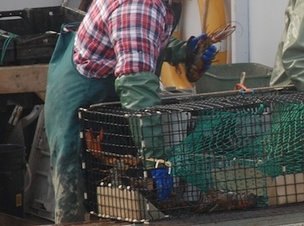 Photo by Melissa Wood Photo by Melissa Wood As fans of The Ghost Trap know, the opening chapter starts with a couple of entitled yachties poaching from a Maine lobster trap for their dinner. This happens way more frequently than you think and it's astounding how some boaters view this as "fair game." Well, it's far from a game, and last month, three Cape Breton lobstermen were charged with killing a man they allegedly caught stealing from their traps. Should anyone die over this practice? No,of course not. But, what if there are few deterrents and all poachers get is a slap on the wrist, legally? This blog post from National Fisherman goes a bit more in depth on the public reaction to the Cape Breton killings, where, according to the author, Melissa Wood said, "Many people disagreed with me, at least on Facebook, where comments were all along the lines that 'he got what was coming to him.' " The following blog post can be found here. The full text follows below: Caught Stealing Last month I wrote that nobody should die over lobster after three Cape Breton lobstermen were charged with killing a man they allegedly caught stealing from their traps. (To update that story, Phillip Boudreau's body has still not been found.) Many people disagreed with me, at least on Facebook, where comments were all along the lines that "he got what was coming to him." It must have been immensely frustrating for the crew of the Twin Maggies, especially since Canadian news outlets report that Boudreau had been (again, allegedly) stealing from them for years. I got more insight about what they may have been up against from "J.R.," who commented on the blog about his experience with a poacher while commercial crabbing. Even though the man was caught and charged, he was not punished beyond a fine and the loss of his recreational license for a year. "If we wanted to pursue getting any compensation for our loss we had to hire a lawyer and sue in civil court. Even the officer handling the case was disgusted [with the] slap on the wrist he got. This would have taken more money and time off the water. So basically the man got a slap on the wrist for taking food off our table," he wrote. Another poaching story came out yesterday from Australia. Commercial crab fisherman Greg Sichter of Sarina Beach was fed up with people stealing from and actually taking his pots. He had lost $4,000 in equipment since Christmas when he decided to take action. The problem is apparently an epidemic there with people thinking of pots as "fair game" according to one official. So Sichter bought bright pink and gray floats so that nobody could claim they mistakenly thought his pots belonged to them, and he bought two portable cameras, which he hid in the mangroves. What he found shocked him: He knew some of the people who were stealing from him. "It really hurts me to think that people who know us, and family people, would do this to us," said Sichter, who turned the images over to police. The violators face up to $55,000 in fines. I understand the fishermen in Cape Breton didn't have mango trees to tie cameras to, but they did allegedly catch Boudreau in the act. Could they have filmed him on their camera phones? Maybe the product companies need to come up with an underwater camera that can be camouflaged in gear? But even that wouldn't do any good if the gear itself is stolen. And after reading what happened to J.R., it made me wonder what options, if any, fishermen have for dealing with people who steal from their traps. For all I know, since few details have come out about the case, the Cape Breton fishermen could have tried many tactics before the violent confrontation with Boudreau. But again, I don't think killing should be a solution. Not only is someone dead, but those fishermen are sitting in jail. How can they support their families now? To read an excerpt of the first chapter of The Ghost Trap (which details this practice) go to Amazon and Look Inside! 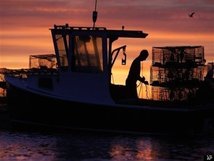 image via Associated press story via by The Associated Press - September 18 2012 Rockland - A Maine lobsterman has been sentenced to 45 days in jail on reduced charges of shooting at a fellow fisherman at a dock in Friendship. Thirty-seven-year-old James R. Simmons pleaded guilty on Monday to misdemeanor charges of criminal threatening and reckless conduct. The victim told the sheriff's department that when he arrived at Wallace's Lobster Wharf on Dec. 4, James Simmons ran back to his truck, pulled out a rifle and fired at him. The victim was not hit. The affidavit said Simmons also threatened to kill the man soon. The victim said Simmons accused him of cutting his lobster traps, which the victim denied doing. HISTORIC INNS OF ROCKLAND JOIN MAINE LOBSTER PROMOTION COUNCIL & PENOBSCOT BAY REGIONAL CHAMBER TO CELEBRATE LOBSTER HARVEST WITH LOBSTERPALOOZA
Mark August 26-31 on the calendar to celebrate all things lobster in Rockland & Camden Rockland, ME – Cheryl Michaelsen, owner of the Berry Manor Inn in Rockland, ME, couldn’t stand to sit by and watch on the sidelines as lobstermen and women in this Midcoast, Maine town caught near record lobster hauls while traditional Canadian markets rejected them. The result, as we all know, has meant prices have dropped while lobster remains in abundance this summer. Michaelsen turned to her fellow colleagues at the Historic Inns of Rockland and said “Let’s turn lobsters into Lobsteraid!” Lobsterpalooza was the brainstorm of the four progressive Historic Inns of Rockland who then enlisted support from the Maine Lobster Promotion Council and the Penobscot Bay Regional Chamber of Commerce to raise enthusiasm for eating lobster and celebrating an abundant supply in the Midcoast this summer. Lobsterpalooza is a weeklong celebration of lobster taking place August 26-31 in Rockland, Camden and surrounding towns where businesses celebrate the lobster harvest with everything from a crustacean cash mob to featured specials, events and more. Lobsterpalooza is just one of the many events happening during the Maine Lobster Lovers Celebration, a promotion created by the Maine Lobster Promotion Council. “It makes sense that we’d hold Lobsterpalooza in Rockland and Camden,” said Michaelsen, “After all, we are the self-proclaimed lobster capital of the universe! This is our way of reminding residents and travelers alike how lucky we are to enjoy the abundant supply of lobster here this summer,” finished Michaelsen. To date nearly 40 restaurants, spas and retail stores have signed on to feature lobster for the Lobsterpalooza week with everything from a free lobster with special spa treatments at spas to a lobster off the boat from Captain Jack’s Lobster Adventures. The four Historic Inns of Rockland will feature lobster on the breakfast menu during Lobsterpalooza week, while offering specially discounted tickets for lobster adventures. A number of restaurants including Café Miranda, Sweets and Meats Market and In Good Company, Bricks Restaurant, Amalfi by the Water and many additional restaurants will feature new lobster entrees on the menu along with old favorites. Additionally, Crustacean Cash Mobs will be held at Jess’s Market on Tuesday, August 28th andShip to Shore Lobster Company in Owl’s Head on Thursday, , August 30th .. Cash mobs are the perfect way to support local, independent businesses, and in this case local fishermen. Simply plan to buy lobster on August 28th from Jess’s Market and August 30th from Owl’s Head’s Ship to Shore Lobster Co.. Additionally, Cellardoor Winery will feature a Lobster Lover’s cooking class on August 31 and All Aboard Trolley Company will offer a special “Nap-AH and Lob-STAH” Wine tour on Monday, August 27th . Lobsterpalooza will feature a drawing for a Lobster Lover’s Getaway to be enjoyed in June, 2013. Sign up to win at all participating businesses. No purchase is necessary and a winner will be drawn at the close of Lobsterpalooza week. The lucky winner will receive a grand prize June 2013 Lobster Lover’s Getaway including: · Two nights accommodations at a choice of four Historic Inns of Rockland, sometime in June 2013 · Breakfast each morning. · Two Got Lobster T-shirts, lobster hats and chocolate lobsters · Tour of Ship to Shore Lobster Company pound and lobster dinner for two on the docks · $50 gift certificate to Café Miranda for Lobster Mac n Cheese or choice of other lobster entrée · Two tickets for Captain Jack’s Lobster Adventure · A lobster lovers gift basket filled with offers and gift certificates from many other Rockland businesses (including Archers on the Pier, Waterworks Restaurant, Sweets and Meats, Clan MacLaren) Participating businesses will post Lobsterpalooza posters in the windows. Entry forms will be available at participating businesses and at Camden and Rockland visitor centers. Here’s the full line up of the events celebrating lobster during Lobsterpalooza: August 27: All Aboard Trolley Nap-AH and LOB-Stah Winery Tour – enjoy wine and lobster tastings. August 28: All day: Jess’s Market Cash Mob, Rockland– Plan to buy local to support local fishermen August 28: 2-3pm: Between Fact and Fiction: The Subculture of Maine Lobstermen, Breakwater Room at the Maine Lighthouse Museum: K. Stephens, a Midcoast author of The Ghost Trap will host a presentation/fiction reading about Maine's lobstermen. The Ghost Trap (Leapfrog Press, 2009) follows the haunting story of Jamie Eugley, a young lobsterman struggling with the grinding responsibilities of a head-injured fiancée and mounting trap wars in a fictional setting based around Tenants Harbor, Spruce Head, Port Cyde and Friendship. August 30: Ship to Shore Lobster Cash Mob, Owl’s Head – Plan to enjoy lobster today from this local lobster pound August 31: Oceanside Mariner Home Opener Lobster Industry Recognition at Half Time Lobster-Lovers Cooking Class at Cellardoor Winery (advanced reservations required) 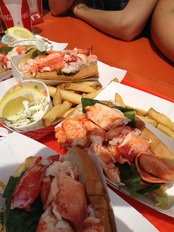 photo: Eat Maine FB page Well folks, this is an interesting summer to be in Maine. Because of a glut of spring lobsters caught, an abysmally low price for the catch and the fact that lobster is now cheaper than freakin' bologna right now, we have what is called an unspoken "tie-up." This is a fascinating chess move where lobstermen up and down the coast refuse to go hauling, but are forbidden to collude or pressure anyone from going out. The few folks I've spoken to who will naturally remain anonymous say that despite what you may think, this has been very peaceful. No trap molestation, no underground wars. These people work HARD and they're getting screwed. So do your part, buy some lobster this week; let's run down this glut, run up the price so these guys can go out fishing again! I'm including a column by Working Waterfront's Philip Conkling here, which explains how this has all gone down. The Great Silent Lobster Tie UpJuly 12, 2012 Column Long View
by Philip Conkling This morning on Vinalhaven was eerily silent as the sky lightened in the east. No gulls keened, no ravens croaked and no muffled diesels thrummed on their way out of Carver’s Harbor. On the way to the morning ferry, little knots of lobstermen stood on the post office steps, in front of the Odd Fellows Hall and at the large parking lot where lobstermen park their trucks on their way to their boats. Related Looking out over the expanse of one of Maine’s premier lobster fishing harbors, you saw something you never see: the entire fleet at rest in the light air in early July. Eighty-one motionless lobster boats looked like a mirage. No one was at Bickford’s lobster station, no one at the Vinalhaven Co-op, no one at Linda’s Bean’s wharf, no one at Rocket’s float at the harbor entrance. No boat was tied up at Hopkins Boatyard; no one was loading bait or traps at the old crab factory. As the 7 a.m. ferry pulled away from its pen, another half dozen lobster boats were similarly frozen in place in Sands Cove, along with a dozen more in Old Harbor and a few others at Dyer Island. When the ferry passed through Lairy’s Narrows and churned its way across West Penobscot Bay, no North Haven lobster boats were hauling off Crabtree Point. All the way down the bay past the lobster harbors of Owls Head, the Weskeag, and Sprucehead, the horizon was completely empty, as was the case from Rockland to Rockport to Camden on the western shore. It would be an exaggeration to say that the scene was like the empty skies the day after 9-11, but there is a similarity. So how did this unprecedented cooperation among fishermen throughout a huge lobster fishing area happen? No one is saying, and for a good reason. It’s called the Sherman Anti-Trust Act, which prohibits collusion among businesses on practices that influence price. Since virtually all Maine lobstermen are independent businessmen, the law theoretically prohibits any lobstermen from talking to another and agreeing not to go fishing. That’s called “restraint of trade” and led to the conviction of Leslie Dyer, the first head of the Maine Lobstermen’s Association, in federal court in 1958. It was a thunderously unpopular verdict, but has left a bitter enough legacy during the last half century that even talkative lobstermen run silent and deep when it comes to any mention of tie up. The issue, however, is sensitive enough that Maine’s Commissioner of Marine Resources, Pat Kelliher, just released a statement cautioning any fishermen from issuing threats of force against any other fishermen who might continue to haul their traps. In the deafening silence of how the great silent lobster tie up has been be achieved, the “coconut wireless” has been unusually active. One such story is that a fisherman in one unnamed harbor hired a small plane to conduct surveillance to find out which boats were still fishing. Woe unto him. The real explanation for the unprecedented inactivity in lobster fishing communities along much of the Maine coast is both simple and complicated. The simple explanation is price. Lobsters that a year ago were fetching only $2.50 per pound—a historically low price for this time of year, have fallen in many harbors to as low as $1.50 per pound. Almost nothing in the universe can create unanimity among lobstermen, but lobster prices have not been at such a low point for approximately 30 years. With prices this low, it is simply not worth leaving the dock. The more complicated part of the story concerns why prices have plummeted to this abyssal level. And there the explanations are varied, each containing a piece of the truth. To begin with, the lobster shedder season started six weeks early this year in southern Maine after an eerie warm spell that lasted most of March. Lobster processors buy shedders to sell as claw and knuckle or lobster tail packs because they are cheaper than hard shells. Not only have the shedders come early, but their percentage of the landings has also increased—upwards of 70 percent in some harbors throughout May and June. Hard shell lobsters command as much as $2 more a pound than shedders, so typically in June, a lobstermen’s average price for his catch might hover around $3.50 per pound with a mix of shedders and hard shells. After the Fourth of July, when upwards of 90 percent of lobsters are shedders and their price is so depressed, well…you have to decide whether it is worth it to go fishing. Added to this unhappy state of affairs, is that a number of lobster processors in Atlantic Canada have gone under in recent years, which has further reduced the demand for Maine’s shedders. Canadian lobstermen, who only fish in early spring and late fall, also reportedly landed larger catches than usual and filled much of the existing Canadian demand. Then there is the state of the general economy. Few people realize that two of the biggest markets for Maine lobsters are the all-you-can-eat cruise lines and national restaurant chains like Red Lobster. The cruise lines have not distinguished themselves this year after the Costa Concordia ran aground in the Mediterranean and Seafood Business News recently published a story detailing how Red Lobster is overhauling its menu to appeal to more cost-conscious diners, which cannot bode well for the lobster industry. And now for the real kicker: after many decades of self-imposed lobster conservation measures by the lobster industry, the population of lobsters crawling about the bottom of every bay, sound, thorofare, and tidal river is at a historic high. Just when the demand for Maine lobsters has slackened, the supply has gone off the charts, with the inevitable result of declining prices. So lobstermen have to decide it they want to address the fundamental structural business issue they face: they fish hardest for lobsters when the seasonal prices are lowest. In the long run, prices are only affected either by increasing demand—a long and expensive process—or by reducing supply—a painful and discouraging process. There are no silver bullets. Almost three years ago, the governor’s lobster task force recommended a joint public-private strategy to invest in the “Maine” part of the state’s tarnished lobster brand, which has many imitators nationally (including fraudulent ones) and a lackluster reputation internationally. But lobstermen were just recovering from the shock of the onset of the Great Recession and balked at the recommendation of a five cent a pound levy on landed, brokered and processed lobsters to create a significant marketing and branding fund. The Lobster Advisory Council has recently resurrected a discussion about this strategy at meetings along the coast during the past month. With lobstermen caught between the pincher of low prices and the crusher of increased fuel and bait costs, few expect to see a groundswell of enthusiasm for making a new investment under current price conditions, which are unlikely to improve very much anytime soon, or to reduce fishing days during the shedder season or some combination thereof. But then, you have to ask yourself, when is it a good time to invest in your business and brand? If you did not invest when times were good and your wallet was fat, what will you do when your back is against the wall? Philip Conkling is President and Founder of the Island Institute based in Rockland, Maine. Article courtesy of The Bangor Daily News
FRIENDSHIP, Maine — The sinking of two lobster boats is rekindling memories of hostilities among lobstermen two years ago that led to a near-fatal shooting, boats being sunk and a barrage of lobster trap vandalism along Maine’s lobster-rich coast. Someone this week sabotaged two lobster boats, allowing them to drift free and flood with water before washing ashore in this postcard-pretty harbor. The dispute has shone a light on the unwritten rules of the sea, where fishermen often take matters into their own hands to settle grudges. Lobstermen for generations have cut trap lines and shouted threats to settle differences over who can set their traps where. In more extreme instances, they’ve been known to ram boats and fire warning shots into the air. The vandalism crossed the line late Monday night, when the 28-foot Lobstah Taxi and the 35-foot Fantaseas were sunk. Only a portion of the larger boat’s cabin was above water when it was found Tuesday morning on an island outside the harbor. The smaller boat was found on a mainland beach, but escaped serious damage. Investigators don’t know if the attacks were the result of a personal vendetta or a territorial feud. At the least, they’ve brought unwanted attention to this fishing community 75 miles northeast of Portland. “It’s sad, awful sad,” said lobsterman Doug Simmons, 60, as he worked on his gear Thursday in preparation for setting his traps in the coming weeks. “It’s cost people a lot of money.” The boats were owned by Gary Jones and his 15-year-old son, Logan, who live in the neighboring town of Cushing, said Marine Patrol Sgt. Rene Cloutier, who is investigating with the Knox County Sheriff’s Department and the U.S. Coast Guard. “There’s nothing that says this is a territorial thing,” Cloutier said. “It could be, but nothing points that way now.” Gary Jones has been on the receiving end of vandalism before. In 2010, another Cushing lobsterman was charged with cutting 22 of his lobster buoys. At the time, Jones said trap and gear vandalism had cost him nearly $10,000 over three years. Gary Jones’ wife, Tina Jones, said she and her husband aren’t commenting on this week’s incident, adding that her husband and son are hardworking fishermen. “People are looking at us and thinking if that happened to us we must be bad-assed people,” she said. This week’s boat sinkings are bringing back memories of 2010, when hostilities especially were in high gear. On remote Matinicus Island, 20 miles offshore, a lobsterman fired a handgun at two fellow lobstermen, hitting one in the neck in a near-fatal dispute over lobster traps. A jury later found Vance Bunker not guilty of elevated aggravated assault. Two weeks after the shooting, someone sank two lobster boats and damaged a third in Owls Head, another midcoast fishing harbor. Throughout the summer, police investigated a rash of complaints about lobster trap lines being cut, resulting in lost lobster gear. Last year was relatively calm, but the sinkings in Friendship are raising questions about whether this coming summer will be heated. For now, there aren’t any indicators that tensions are ready to erupt, “knock on wood,” said Marine Patrol Maj. Alan Talbot. “Hopefully it’s just a random thing,” he said. “But who knows what’s to come.” Gary Jones’ boat was taken to a boatyard in Owls Head for repairs. His son’s boat sits on boat jacks at Lash Boatyard in Friendship. Lobstermen in town are a reticent bunch, but they’ll tell you they think the perpetrator was from somewhere other than Friendship. The Joneses are from Cushing and don’t even fish the waters off Friendship, they say. “You might be able to say this was a Friendship thing if he fished here — but he don’t,” said lobsterman Kendall Delano as he sanded his trap buoys in a waterfront building. Wesley Lash, who works for his father at the boatyard, said the sinkings don’t reflect well on this sleepy town, which has about 1,200 residents, just a single store and not even a traffic light. “It gives Friendship a bad name,” he said. “People’ll say, ‘Friendship, that doesn’t sound like a friendly place.’” Lash’s father, also named Wesley, said there have been feuds as long as there’s been a lobster industry. “You go from Portsmouth [N.H.] to Eastport and it’s the same thing,” he said. Still, Friendship gets its share of feuding. Simmons remembers years ago when somebody slammed a crowbar through the hull of another boat, causing it to sink. This past winter, somebody fired a shot from a high-powered rifle into the hull of a lobster boat, Cloutier said. The shooting is under investigation. “It happened late at night, nobody saw anything and Friendship is a pretty tight-lipped community,” he said. Well you know, to write the novel, I had to learn not only how lobster traps work but also what it would take to really thrash the sh** out of one--say in some dubious middle of the night situation. Disclaimer: I didn't actually go out in the middle of the night and thrash the sh** out of one. Here at the 38th Annual Maine Fisherman's Forum, I wandered over to the Friendship Trap Co. booth to ask about the steel runners they had on display and how they worked with wire traps. Here, for the layman lobster aficianado, is how it works. To sink a galvanized wire trap so that it stays on the bottom of the ocean, you need weight, but not so much weight that you throw out your poor, friggin achin' back just to lift a trap onto the rail. When you're in your 40s and 50s 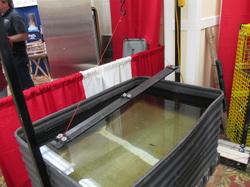 What you're looking at here are LiteLoad Runners, steel runners that attach to the bottom of the trap with a heavier density in the water. In the photo, they are showing how much these runners weigh once submerged. If you want to see how it really works along with a big burly lobsterman, check out the video here. But basically, these LiteLoads will save your back and guys who've been lobster fishing all their lives and have a little extra to spend are likely choose these rather than the next two options. When you're in your 30s. As you can see this is a wire trap with concrete runners bolted right onto the bottom. Apparently PVC and concrete bolt-on runners are the medium range of weight. Let's say you've been lobstering since you were 12 and you might have tweaked your back on a couple of good keg stands or falling off a dock, but you haven't mangled yourself yet. There's still some usefulness to you and your wallet to go this route. When you're in your 20s and teens. This here, as you can see is about as old-school as you can get. Wire trap. A place for a brick. Add brick. The lobstermen of yore used to weigh their wooden oak traps down with bricks because obviously with wood, you need something to keep them from floating. But today, I'm told (and please comment if I've left anything out or said it wrong) that this is about as budget as you can get. Great for kids up and coming because they have backs like Superman. So what's the best for an unstompable trap? Here the nice gentleman from Friendship Trap Co. actually has a display that shows when he's standing on the bottom of a trap reinforced with bolt-on concrete, there's no give or sag when he steps upon it. He steps over to the next trap (to his left in the pic), only clad in oak runners and bam, it goes down like wilted lettuce. So, that's what I found out. If you don't want your traps to get the sh** thrashed out of them, outfit 'em in concrete.
I'm re-posting this column by one of my fave Maine islanders, Eva Murray, who basically delivers a spin on a column I wrote about a year ago "Top Ten Dumbest Questions Tourists Ask." This is Eva at her best, giving it to ya straight. Re-posted from Village Soup. There is no boat Someone you know needs this. Send it to them, please. I know who I’ve got in mind. It won’t do any good, most likely, because it’s very hard to get people to give up their preconceived mistaken ideas, but it might make us both feel better:
1. Stop saying “the boat.” There is no boat. At least, not like what you’re thinking. Sometimes there is a boat. 2. When there is a boat, there is no “morning boat,” like every morning at 9 a.m. or anything regular like that. There is no daily ferry. There is no island mail boat. There is no zip-back-and-forth-anytime-you-want water taxi. The state vehicle ferry comes roughly 30 times a year but the schedule for 2012 looks like this: Friday, Jan. 13, leaving Rockland at 8:15 a.m.; Monday, Feb. 13, at 9:45 a.m.; Friday, March 23, at 8 a.m. Are you starting to get the picture? Three trips in April, three in May, four in June. People keep telling me the ferry serves Matinicus every two weeks. I don’t know where they get that. I explain how it works and once in a while they even argue with me, which seems nothing short of bizarre. By the way, the passenger boat, which is not the same thing as what we call “the ferry,” keeps a completely different schedule, also irregular and based on the tides, and is seasonal only. This time of year, when even once-monthly state ferries can and should get canceled due to nasty weather there is, for all intents and purposes, no boat. 3. You might assure me that, “Surely one of the fishermen will take you across whenever you need to go” but you have dreamed that up in your head (or are reminiscing about the 1960s). 4. They might give us an extra ferry trip if there are several trucks waiting to get across, such as to deliver firewood, lumber or propane, but a few walk-ons who wish a cheaper passage than the air service can provide will not cause the Maine State Ferry Service to muster the four-man crew, thrash all heck out of its equipment, and spend a fortune on diesel fuel. Sorry. It costs a lot to get here. It costs a lot to leave. Such is island life. 5. For some, this is still not sinking in. I swear somebody is going to call me up this week and ask, “What time’s the morning boat?” That’s because people think what happens on one island represents all of them, and most other islands do have daily boat service. Each of the inhabited islands has entirely different transportation mechanisms. Somehow I doubt you believe me. 6. Why is it too expensive for you to come here, but you seem to think it no big deal for me to come to you? The cost is the same in either direction. 7. If you call the flying service and plan an island flight too far in advance, it probably won’t be “flyable” when you mean to go. If you don’t call and make a reservation at all, they’ll probably be busy with other flights when you show up. Call the day before and then keep checking in if the weather is questionable. Fog, snow, rain, icing conditions, high winds, or too much mud means “it is not flyable.” Write that down. Your boss will probably not understand, but that is not your fault. Bring your toothbrush (because, you know, there is no boat). 8. If it is almost flyable, your best bet is to hang around. Don’t leave town. Don’t go farther away than the Owls Head General Store. While you’re there, get a pizza. Remember, you can’t get pizza on this island. If you’re at the store anyway, grab some extra milk. Always wise. 9. If you are on the wharf or at the airstrip, you are a freight handler. A longshoreman. A baggage carrier. If you can’t help because you are infirm or managing a baby or an animal, that’s one thing, but if you stand right smack in the middle of things obliviously primping your carefully arranged hair while others unload your boxes from the vessel or aircraft, and you are perfectly able-bodied, you ought to be ashamed of yourself. 10. Most of the obvious things you think we should do, we think we should do too, but we can’t afford. Put up wind turbines for the power company? Open a store/restaurant/public fuel dock? Take down all the dead spruce trees? Make the roads so you can roller skate on them? If you think any of this is merely a matter of will, you haven’t done the math. If any of this is within your personal budget, come on ahead. If you think we just hadn’t noticed how our lives could be made better because we are simply Neanderthals, you’re an idiot. 11. But, of course, we are Neanderthals. Just read the papers. 12. Nobody runs this place. There is a sort of town council of the semi-willing, which sometimes functions and sometimes doesn’t, and there are generally a few guys refining those indirect and subtle Machiavellian reality-TV-style schoolyard political machinations in their efforts to try and run the harbor. I try not to pay too much attention. The old ladies used to run the place, but we are now completely out of old ladies. 13. I truly do not know how many people live here. Nobody does. More and more of the guys catch their lobsters and leave. Sometimes that isn’t even their fault. 14. A few bog wraiths drift around, driving at unsafe speeds and snarling at those of us who really live here. They like to think they’re tough. Sometimes those idiots presume to stomp around on the wharf, and bark orders or issue pathetic threats to people unloading freight, as if we who carry on our year-round daily lives here are somehow in their way. Shut up, you thugs, and either help or move over. You have absolutely no authority to patronize the rest of us. I don’t give a rat’s posterior who you shovel bait for. 15. I hear they named a hockey team somewhere around here the Sternmen. Go Sternmen. 16. All that most of us care about is that somebody teach school, pump oil, keep the electricity and the telephones going, get the mail out, sell bait and buy lobsters, and repair stuff (sumps pumps, largely, and a few washing machines). The paperwork has been growing exponentially, though. Agents of various facets of the nameless bureaucracy seem to think that it matters that somebody fill out forms in a timely manner detailing how many nuclear power plants and ski areas we have, or whether the boundaries of our peculiarly insular municipality have expanded, or whether we plow the sidewalks, or whether such-and-such a house has hardwood flooring, or what percentage of our demographic lives in parks or under bridges, or how many nuts and bolts the power company keeps in inventory. I kid you not. 17. We don’t have any bridges. 18. Or sidewalks. Or a morning boat. |
Author
Columns and news about the subculture of Maine lobstering. Archives
February 2024
Categories
All
|

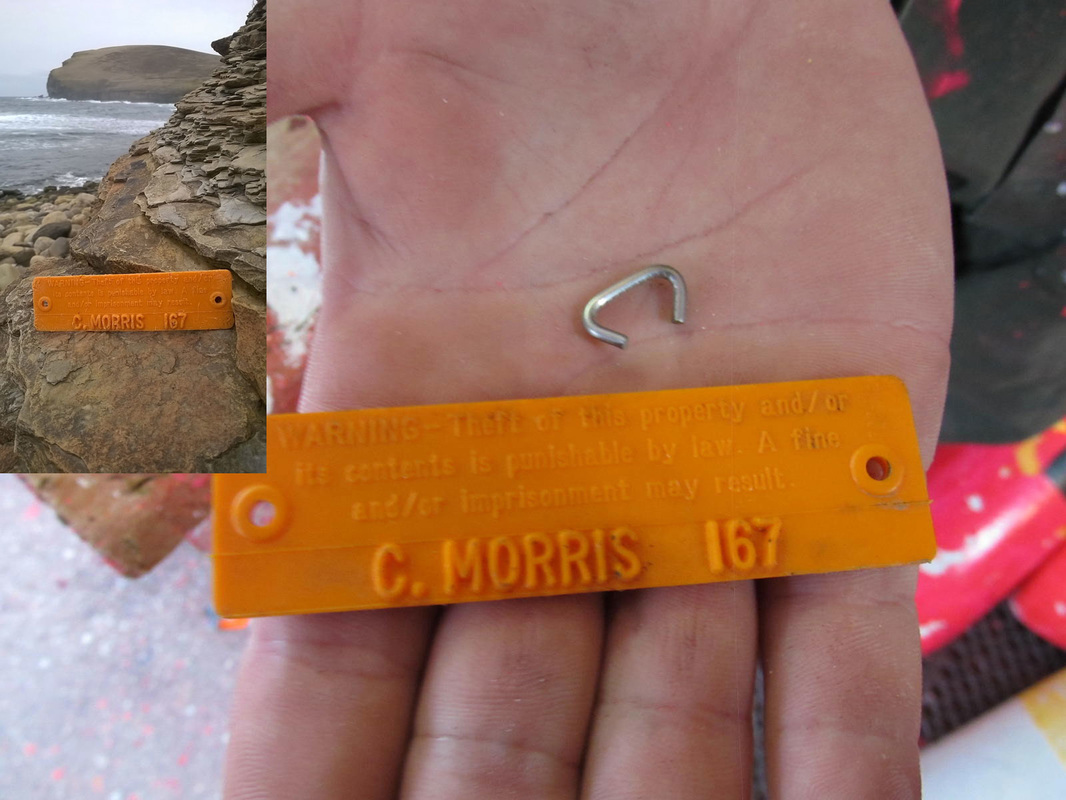



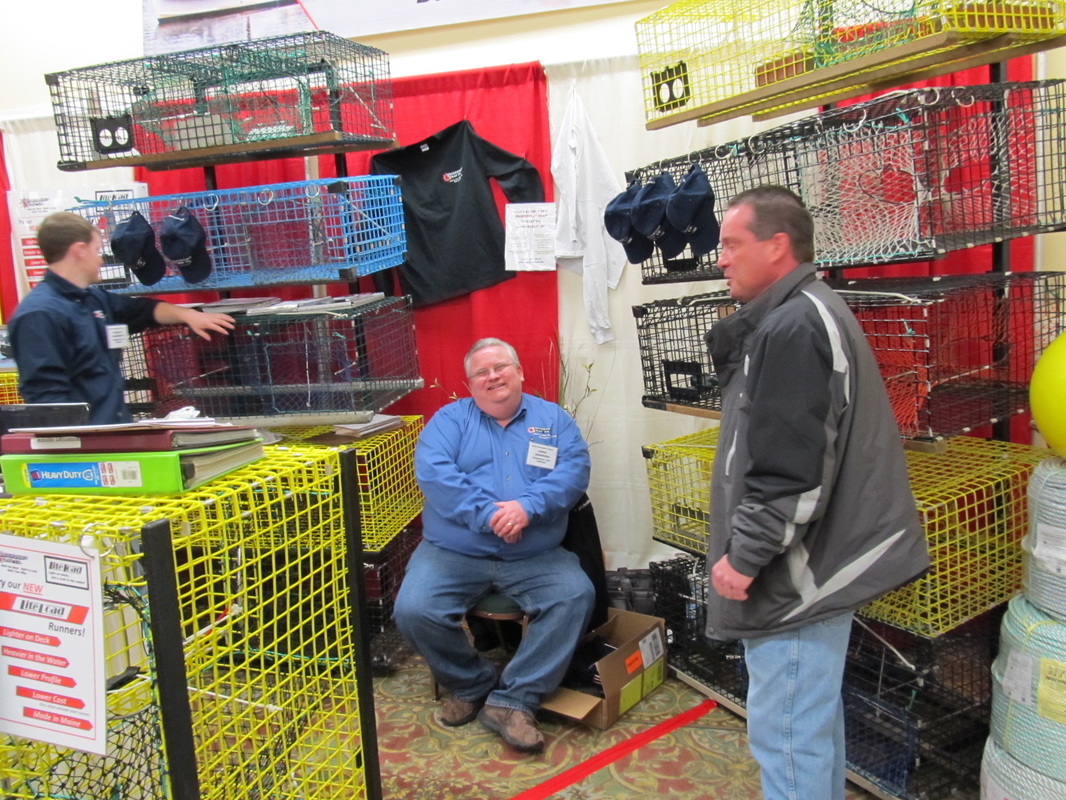

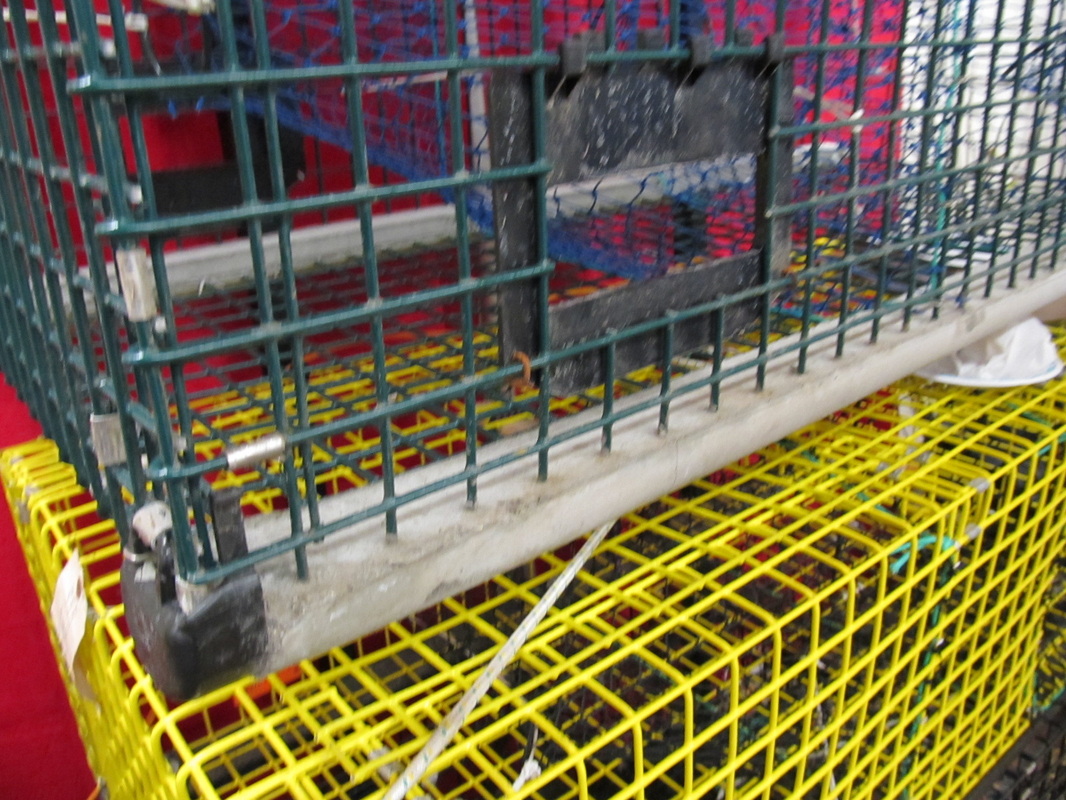
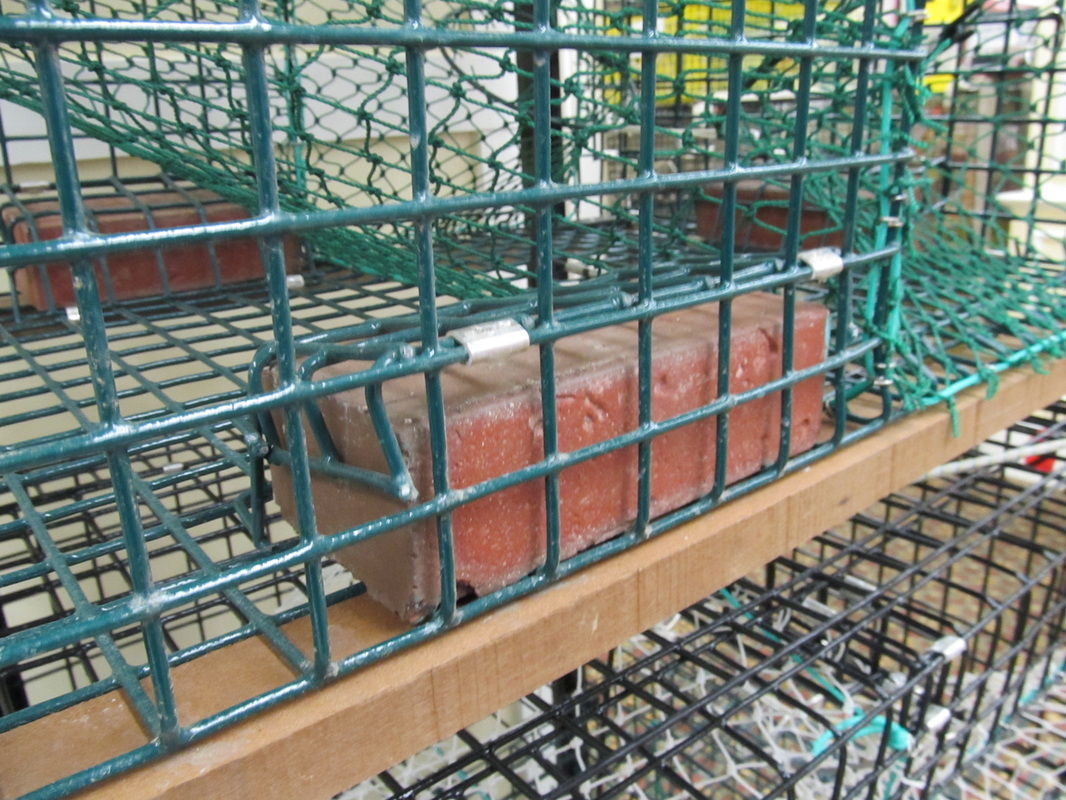


 RSS Feed
RSS Feed
